Goodbye Television Centre
- Published
- comments

The view from inside Television Centre
Well that is it. I have completed my final day working at BBC Television Centre, a place that has been a second home for more than a quarter of a century.
Not, I should add my last day at the BBC, as, along with half of my colleagues who work for the News website I am heading to W1, the new home of BBC News at Broadcasting House - the bright lights of central London and all that.
As the BBC intends to move all staff out of Television Centre by 2013, with plans to sell the site, I doubt I'll spend much time here in the future. So I've been wandering around the building seeking out old haunts within the vast site that makes up the 13-acre site. There are many memories for me in this building, from nights in the BBC Club - including one where I ended up helping Frankie Howerd back to the head of light entertainment's office - through to photo shoots, and all the colleagues I have worked with. But let us not get sentimental.
Our new home in central London is a modern glass office space, and lovely it is too. But it's new, and does not yet have the history of TVC. So I have been delving in to the photographic archive looking at pictures of the early days of the building during construction. Here are a few treasures from the archive showing the rise of Television Centre and the years that followed.

The design for Television Centre was first drawn on the back of an envelope by architect Graham Dawbarn as he attempted to design a building that would squeeze studios around a central office block, whilst ensuring access for scenery.
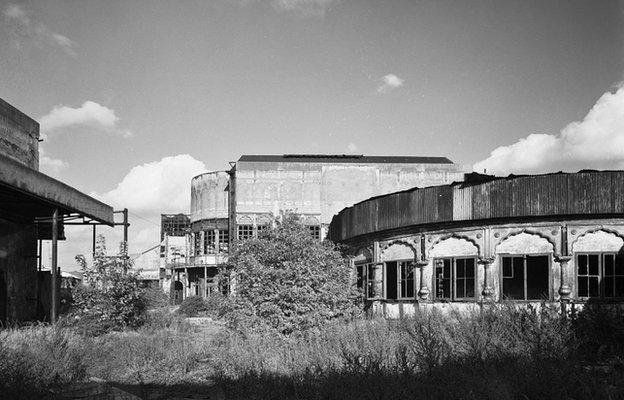
The new home of BBC Television was constructed on the site used for the 1908 Franco-British exhibition at White City in west London.

Construction took six years, although that was only stage one. The final part of the question mark footprint was not operational until 1998.
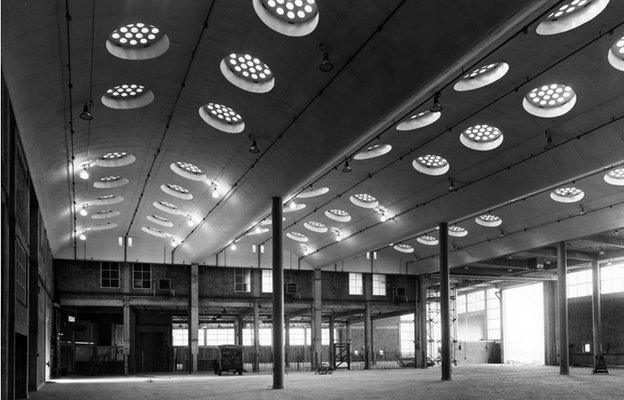
The first building to be completed was the Scenery Block. Architectural touches abounded and often in surprising places. Here an elegant ceiling covered little more than the space to house racks of scenery awaiting despatch to an allocated studio.
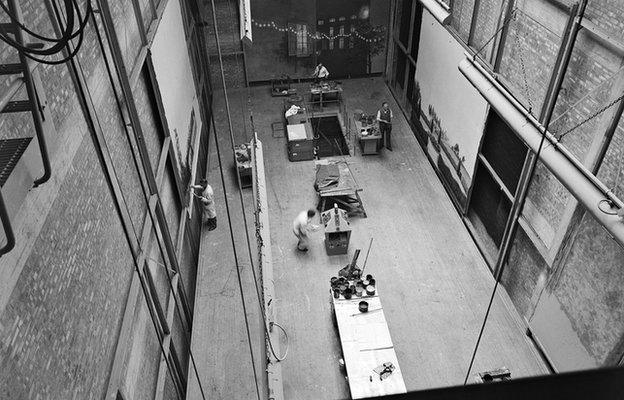
The block also housed the Scenic Artists Studio. This high room allowed canvasses to be raised or lowered to facilitate the painting of large areas.
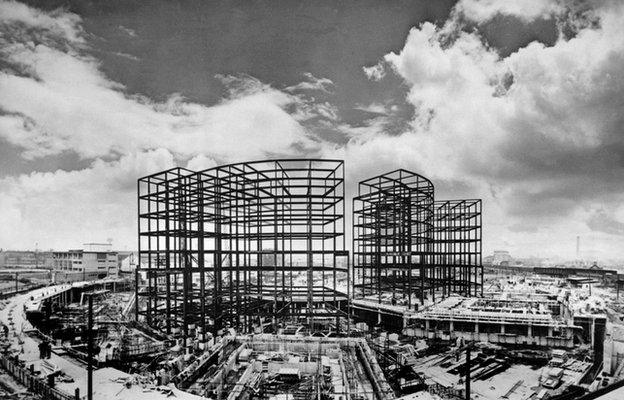
The unmistakable shape of the building can be seen in the skeleton metal work. The west London complex had seven television studios, the largest - Studio 1 - measuring 11,000 sq ft (1,000m sq).
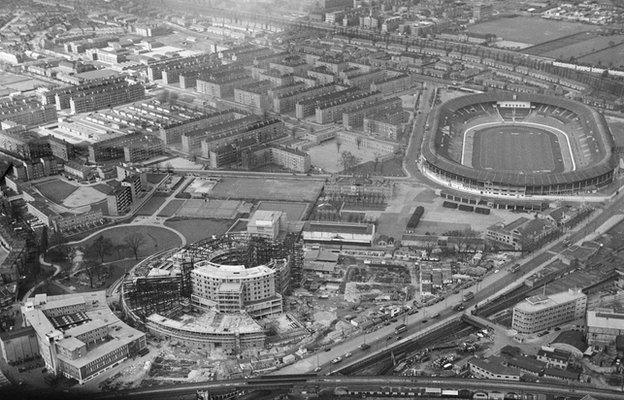
The Centre was a short distance from the White City sports stadium which hosted the Olympics in 1908.
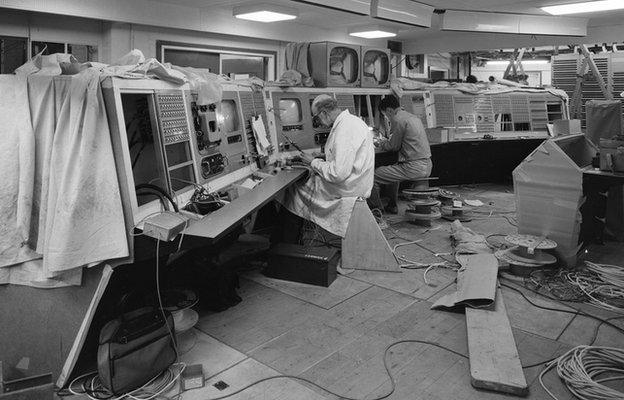
Following construction, the building was fitted out with the latest broadcast technology. Here engineers completed the room known as CAR, or Central Apparatus Room.
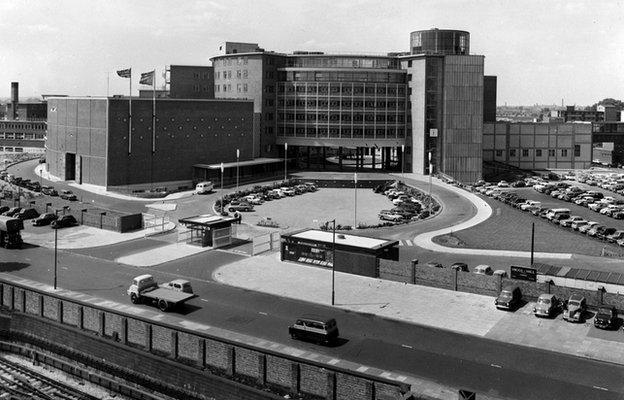
Television Centre opened on 29 June 1960 and the director of BBC Television, Gerald Beadle, said the £12m complex would be "immensely important" to British prestige and trade.
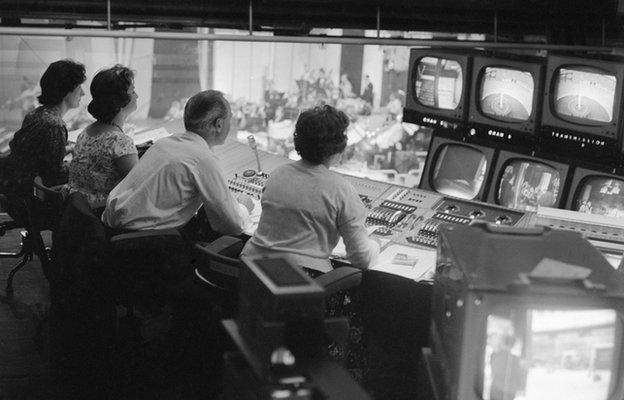
The first studio production televised from Television Centre, First Night, was a variety show filmed before an audience largely make up of people who helped create TVC.

Mr Beadle said: "This Centre is the largest, best equipped and most carefully planned factory of its kind in the world."

The sculpture in the central garden depicts Helios, the Greek god of the Sun. Designed by TB Huxley-Jones, and erected in 1960 on the opening of the building, it represents the radiation of television light around the world.
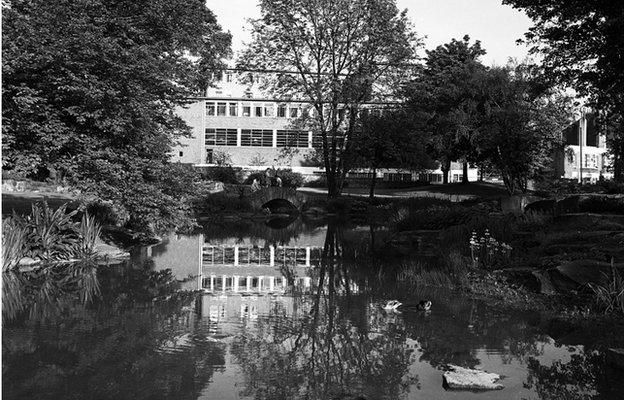
A rural location? No - the view from the park behind Television Centre, a popular place for BBC staff to spend their lunch hour.
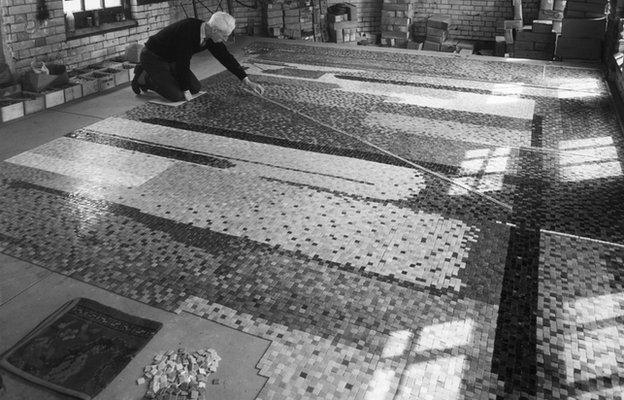
The artist John Piper was commissioned to produce a mosaic mural for the main reception.

The reception area will be familiar to many viewers as it has featured in many programmes through the years. The mural remains in place today, although much else has changed.
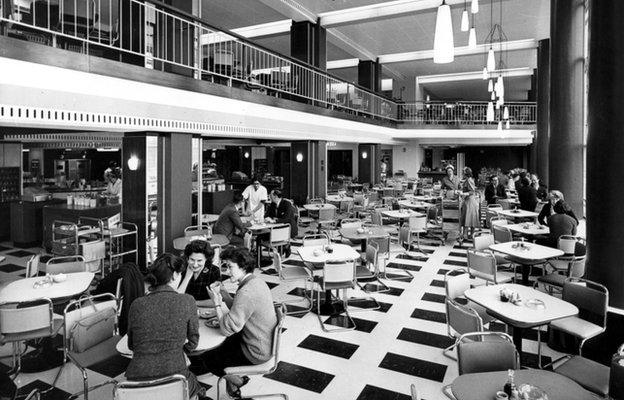
The Canteen Block housed three facilities on different floors, the middle one being known as Waitress Service, for obvious reasons. It closed many years ago, but back in the day, steak and chips could be had for a few pounds.
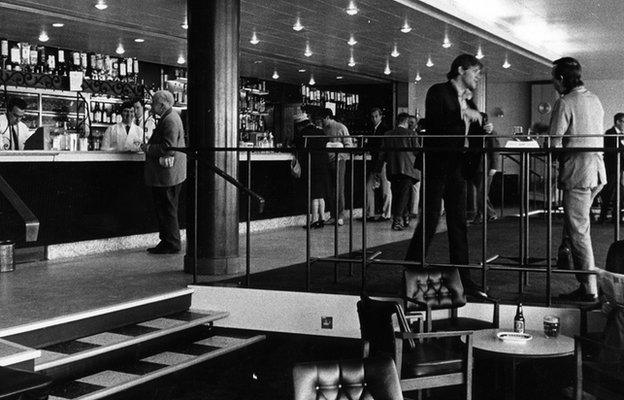
The legendary BBC Club bar was the place for staff to relax and meet the celebrities after they had recorded their programmes... or in some cases before.
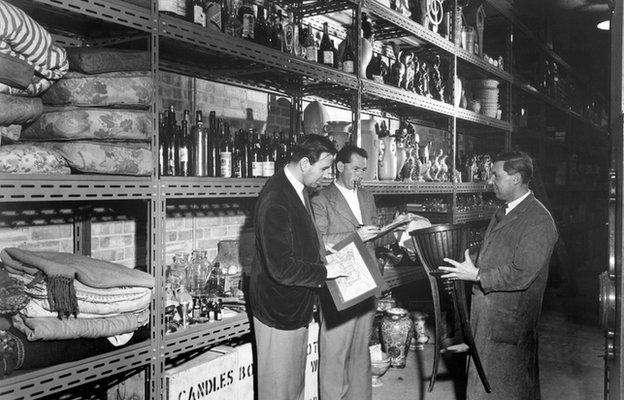
The Design Department supplied more than 187,000 stock properties each year and met with production teams weekly to ascertain their requirements.

The building held everything required in the production process, including the costume department...

... and the wig team.
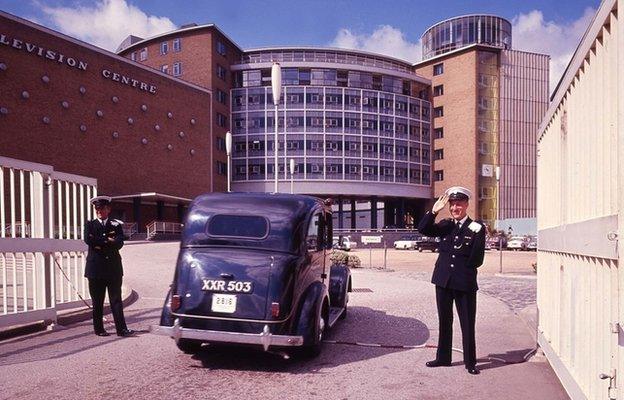
The site also had its own security team, and commissionaires were on hand to greet guests and staff.
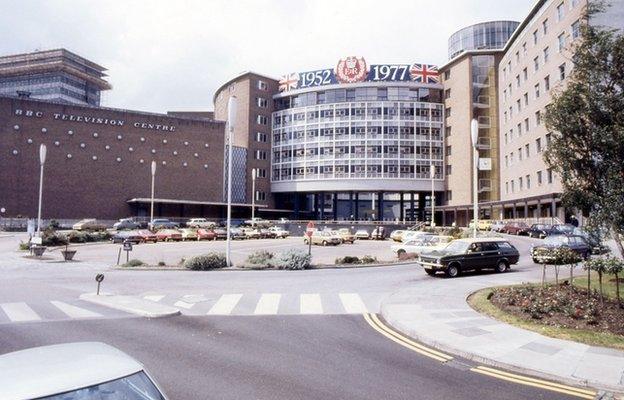
In 1977, the Corporation decorated the top of the Centre to celebrate the anniversary.
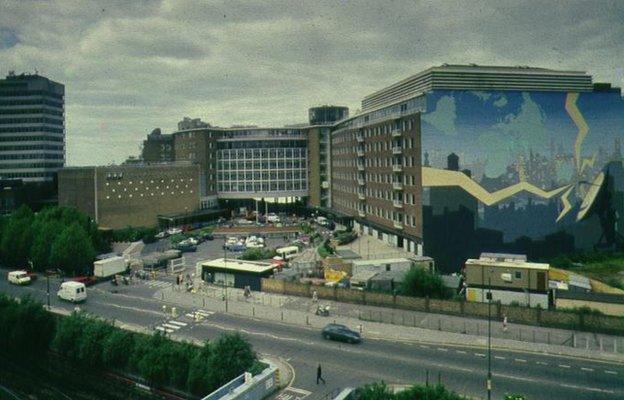
By the late 1980s, the original question mark design had moved nearer to completion with new sections, the Spur and Stage Five on the right. A few years later, Going Live ran a competition to design a mural to be painted on the end of the building.
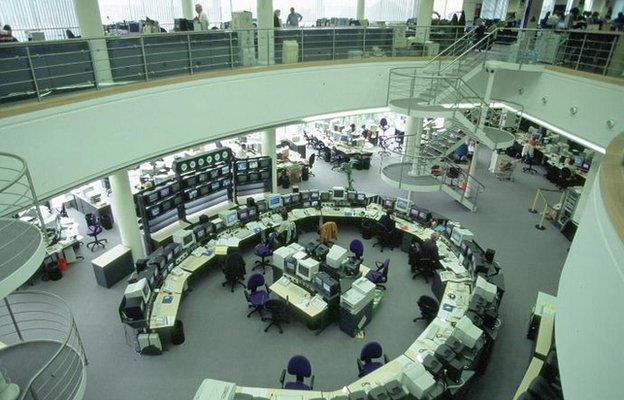
Stage Six followed, with BBC News moving in to what was then a new purpose-built home in 1998. The desks in the photograph operated as a central newsgathering hub, although this was replaced in later years.
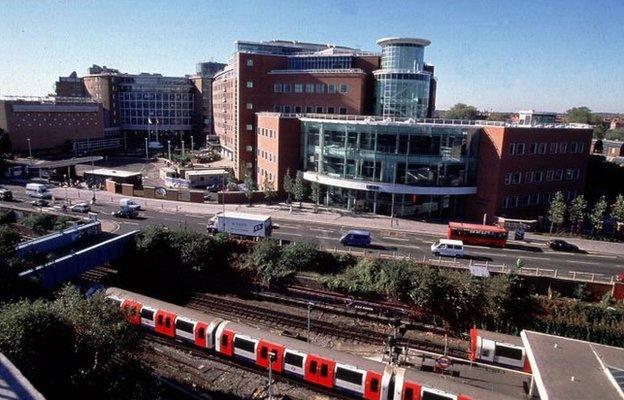
From the outside, the building was complete - the final dot of the question mark in place and the new reception facing Wood Lane.